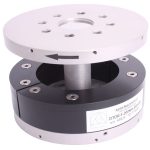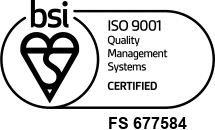Various mechanical configurations of reaction torque sensor are available, including square drive, keyed parallel shaft and flanged types. Custom versions, including combinations of these connections (square drive to flange for example), can be designed to suit specific requirements or, alternative completely customised sensors can be designed and manufactured for specialised applications.
- Flange Types – Ideal for bolting between machinery to measure direct torque.
- Miniature Shaft Torque for electrical motors, pumps and gearboxes.
- Parallel Shaft designed for high accuracy in-line static or semi-rotary torque measurement.
- Square Drive – Ideal for calibration or testing torque tools QA environment.
- Wireless versions for advanced cable-free monitoring, where a hard-wired sensor is not desirable or practical.
All our reaction torque sensor models can be supplied with analogue or digital instrumentation. Including amplifiers and signal conditioners, signal digitisers, displays and indicators and wireless radio telemetry equipment.
Calibration traceable to UKAS standards is available on all static torque transducers and systems.
Static & Reaction Torque Sensors Explained
What is Reaction Torque?
Newton’s Third Law of Physics is in play here; every action creates an equal and opposite reaction. Reaction torque is generated when something is not able to rotate or twist freely. Perhaps the object is bolted or otherwise fixed in position (the housing of an electric motor for instance), or perhaps there is friction between two contacting surfaces (think of unscrewing the lid on a jar or the cap on a fizzy drinks bottle), these things, among many others, are examples of reaction torque.
How Does a Reaction Torque Sensor Work?
At their core, most types of static and reaction torque sensor feature either a solid or a hollow circular shaft as the sensing element, which is made from high-grade aluminium, alloy steel or stainless steel. When a torsional, or twisting force is applied to the shaft, the material deflects, generating shear stresses in the shaft as it resists the torque applied – the amount of strain generated is linearly proportional to the amount of torque applied.
Both this shaft (also referred to as a flexure) and the sensor’s mechanical connections are machined from a single piece of high-grade aluminium, alloy steel or stainless steel to create a precisely-dimensioned, monolithic torque sensing element.
Strain gauges that have been designed specifically to measure this shearing phenomenon (which acts at 45º to the twisting axis) are bonded around the centreline of the shaft and wired into a Wheatstone Bridge circuit, generating a linear output proportional to the applied torque that we can measure and convert into an amplified analogue or digital signal.
All torque sensors are designed with a mechanical connection at each end so that they can be mounted in-line with the torque that is to be measured; typically these connections are square drives, parallel shafts, splined shafts or flanges, but they can also take various other forms as determined by the application.
How Accurate Are Reaction Torque Sensors?
Torque sensors that utilise a shaft-type flexure are inherently accurate devices, typically yielding accuracies of ±0.1% of their rated capacity or better. Additionally, any high performance torque sensor will have temperature compensation components integrated into the Wheatstone Bridge circuit to minimise the effects of thermal changes on both the zero offset (caused by tiny thermal resistance differentials in the strain gauges) and the output signal (caused by changes in the elastic modulus of the flexure material as temperature increases or decreases).
The use of shear-type strain gauges arranged circumferentially also results in a high degree of rejection of any bending or overhung moments that the sensor is subjected to. Bending usually occurs due to angular misalignment between the two parts that the sensor is connected between and so it is common for torsionally-stiff flexible couplings to be fitted in order to mitigate these effects.
Where Are Reaction Torque Sensors Used?
Reaction torque sensors are used in a host of different applications, the most common and well-known being the testing and calibration of torque wrenches. Beyond this, they are used in the manufacture and testing of pumps, as feedback and measurement devices in automotive steering system development, subsea/underwater renewable energy devices (where long-term submersion is required) and a host of others. Applied Measurements specialise in the design and manufacture of customised and non-standard torque sensors so please contact our expert technical team if you need something non-standard, or if you need any form of assistance with your torque measurement needs.
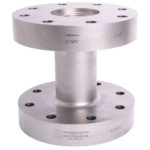 Flange type Static/Reaction Torque Transducer | DTD-F0-10Nm to 0-50kNmFrom £1,168
Flange type Static/Reaction Torque Transducer | DTD-F0-10Nm to 0-50kNmFrom £1,168 Miniature Shaft Torque Sensor | Static/Reaction Torque | YDNS0-0.2Nm to 0-1000NmFrom £2,122Buy Online
Miniature Shaft Torque Sensor | Static/Reaction Torque | YDNS0-0.2Nm to 0-1000NmFrom £2,122Buy Online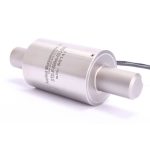 Parallel Shaft Reaction Torque Transducer | DTD-P0-10Nm to 0-10kNmFrom £842
Parallel Shaft Reaction Torque Transducer | DTD-P0-10Nm to 0-10kNmFrom £842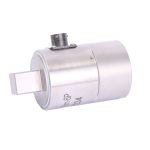 Square Drive Static Torque Transducer | DTD-S0-10Nm to 0-50kNmFrom £842
Square Drive Static Torque Transducer | DTD-S0-10Nm to 0-50kNmFrom £842Torque Meter System | Torque Tester System
0-10Nm to 0-20kNmFrom £1,305Wireless Rotary Torque Sensor | DTDR-F
0-10Nm to 0-50,000NmFrom £4,606


